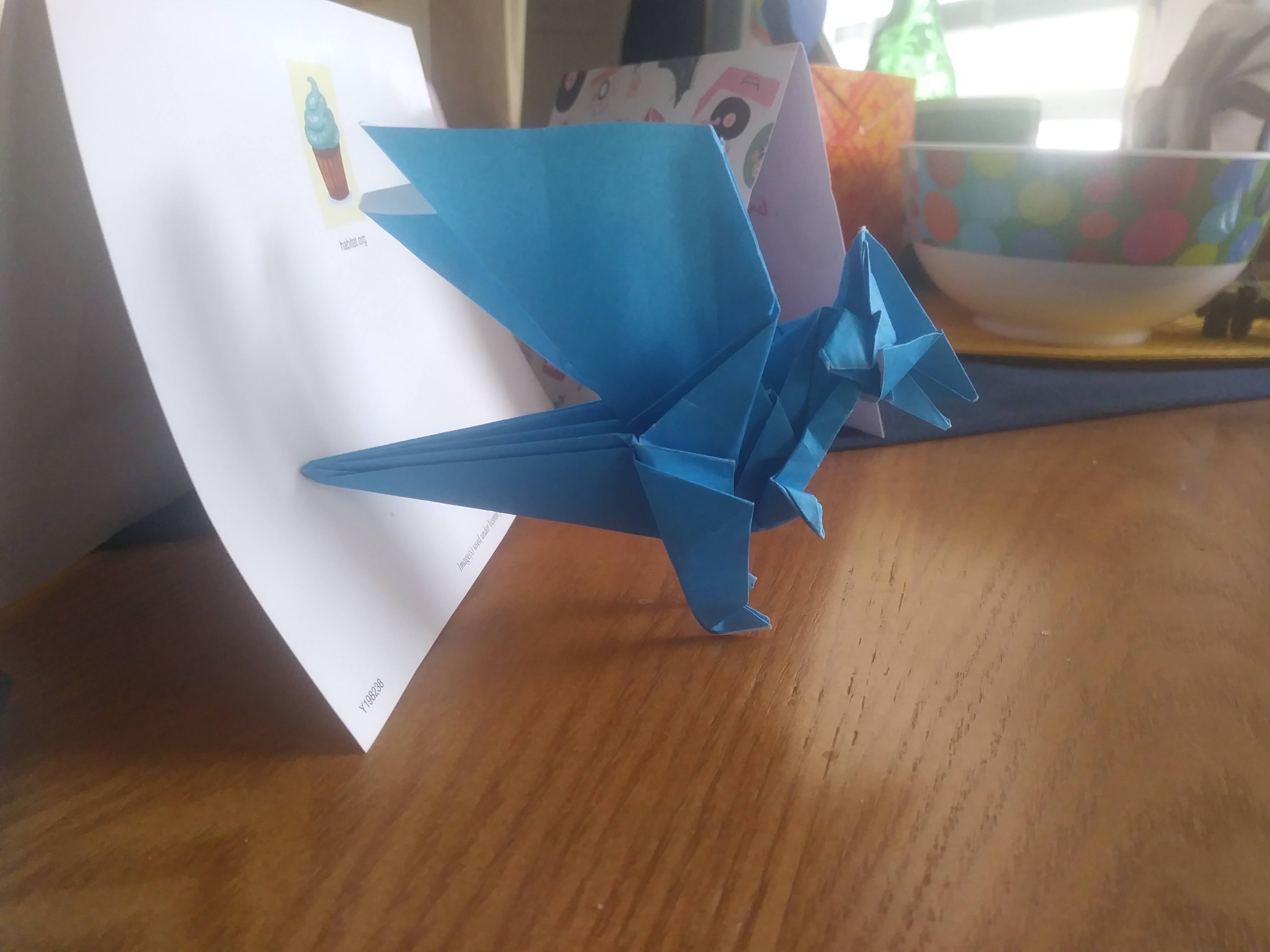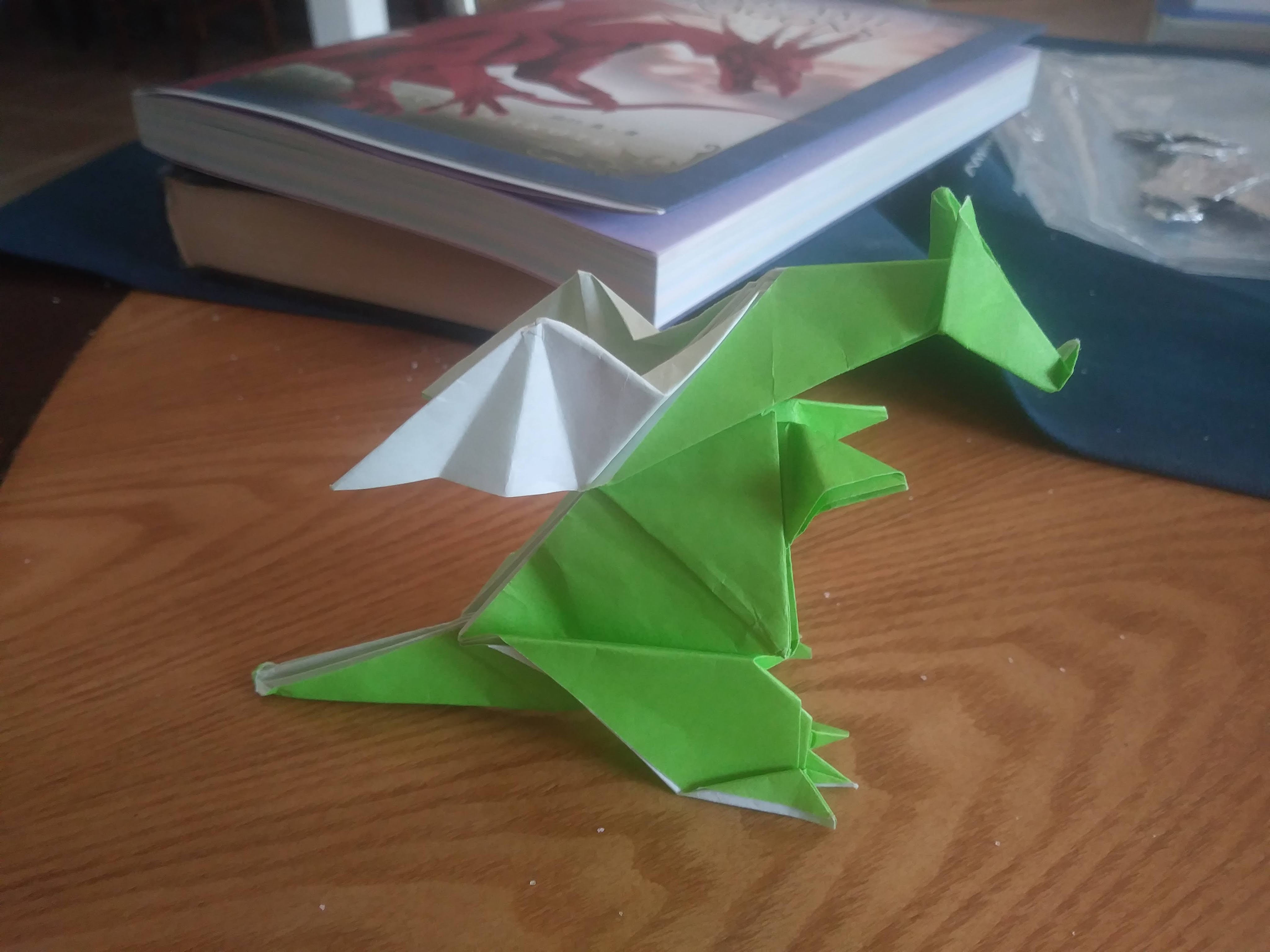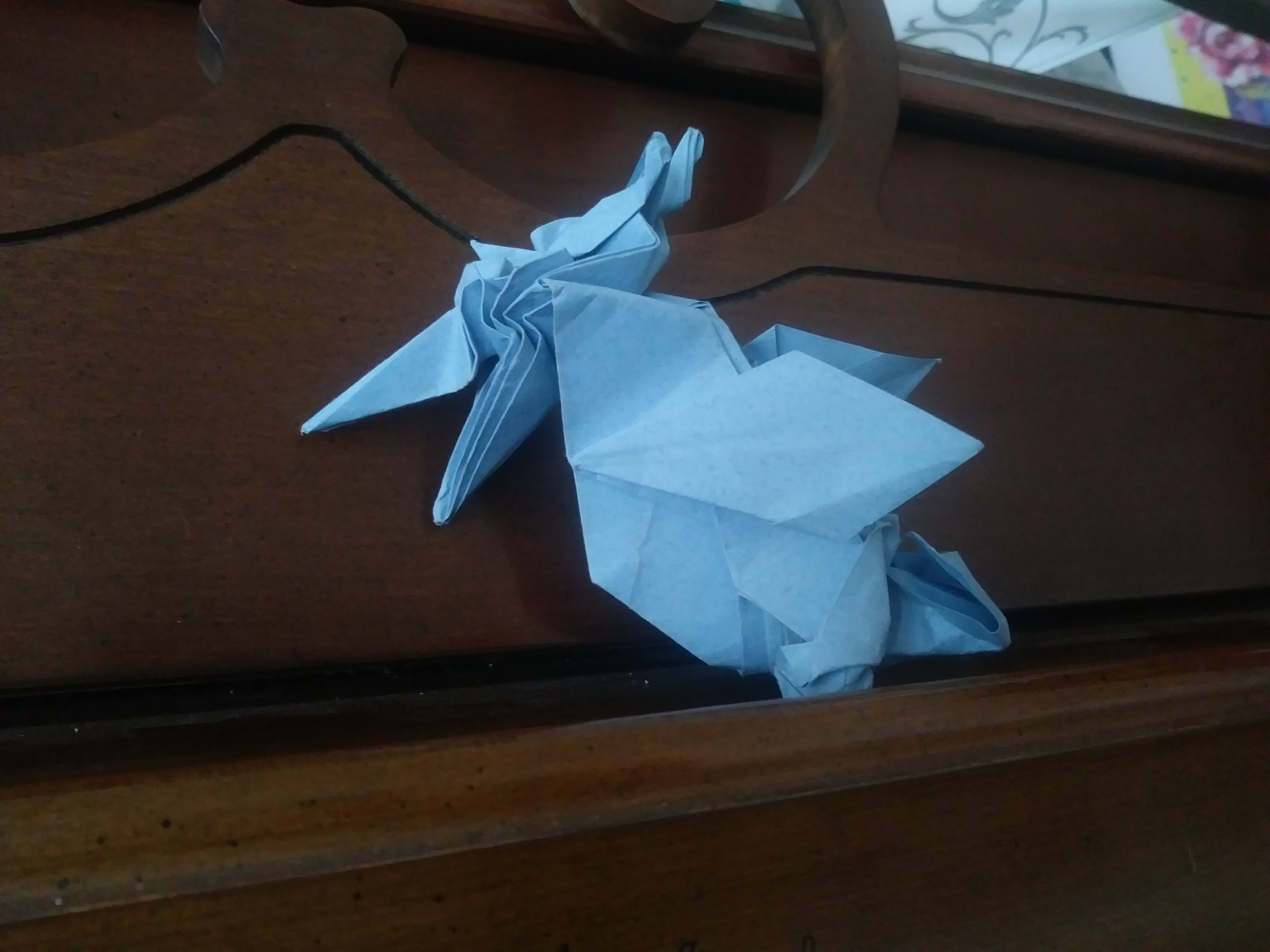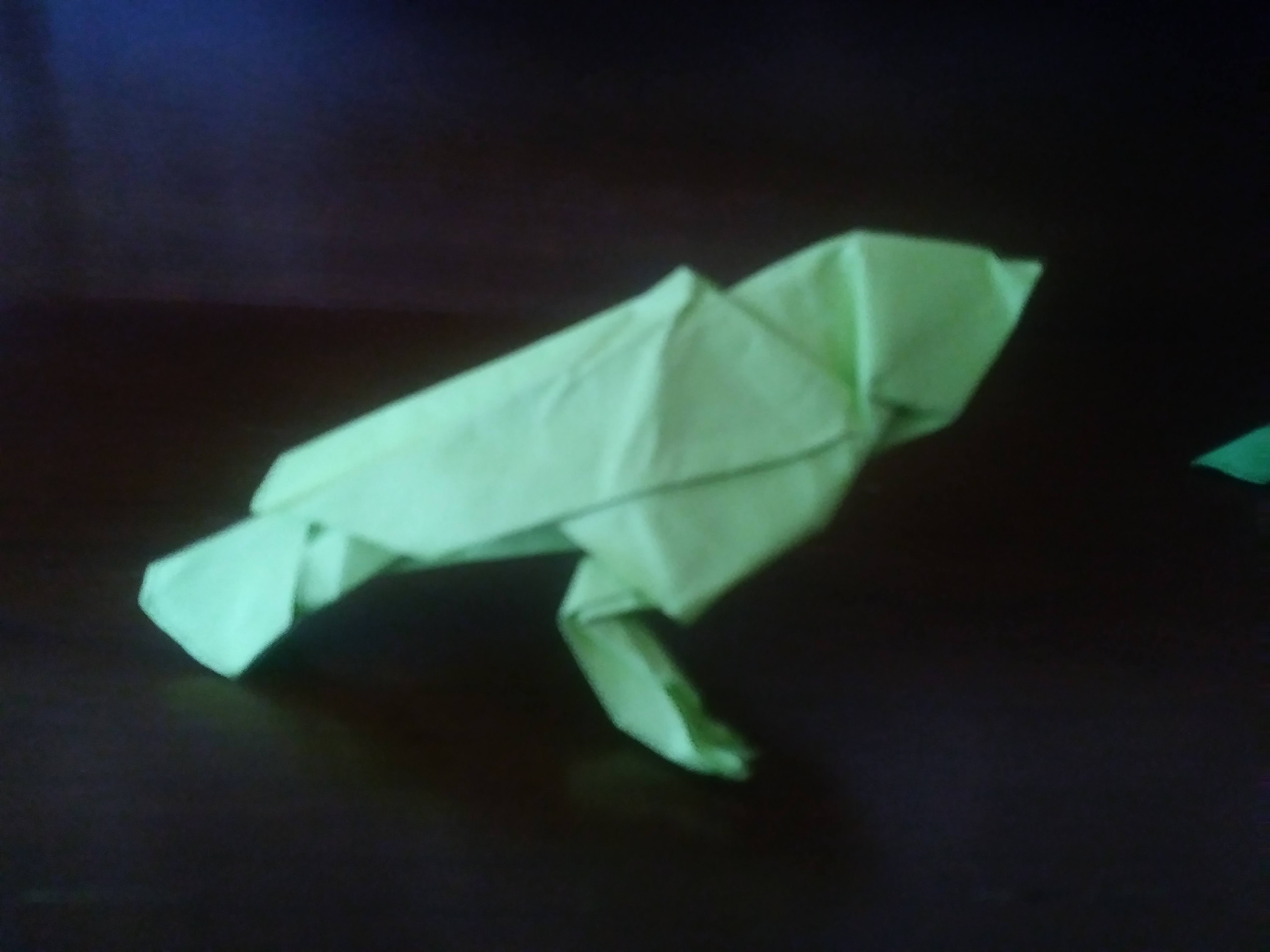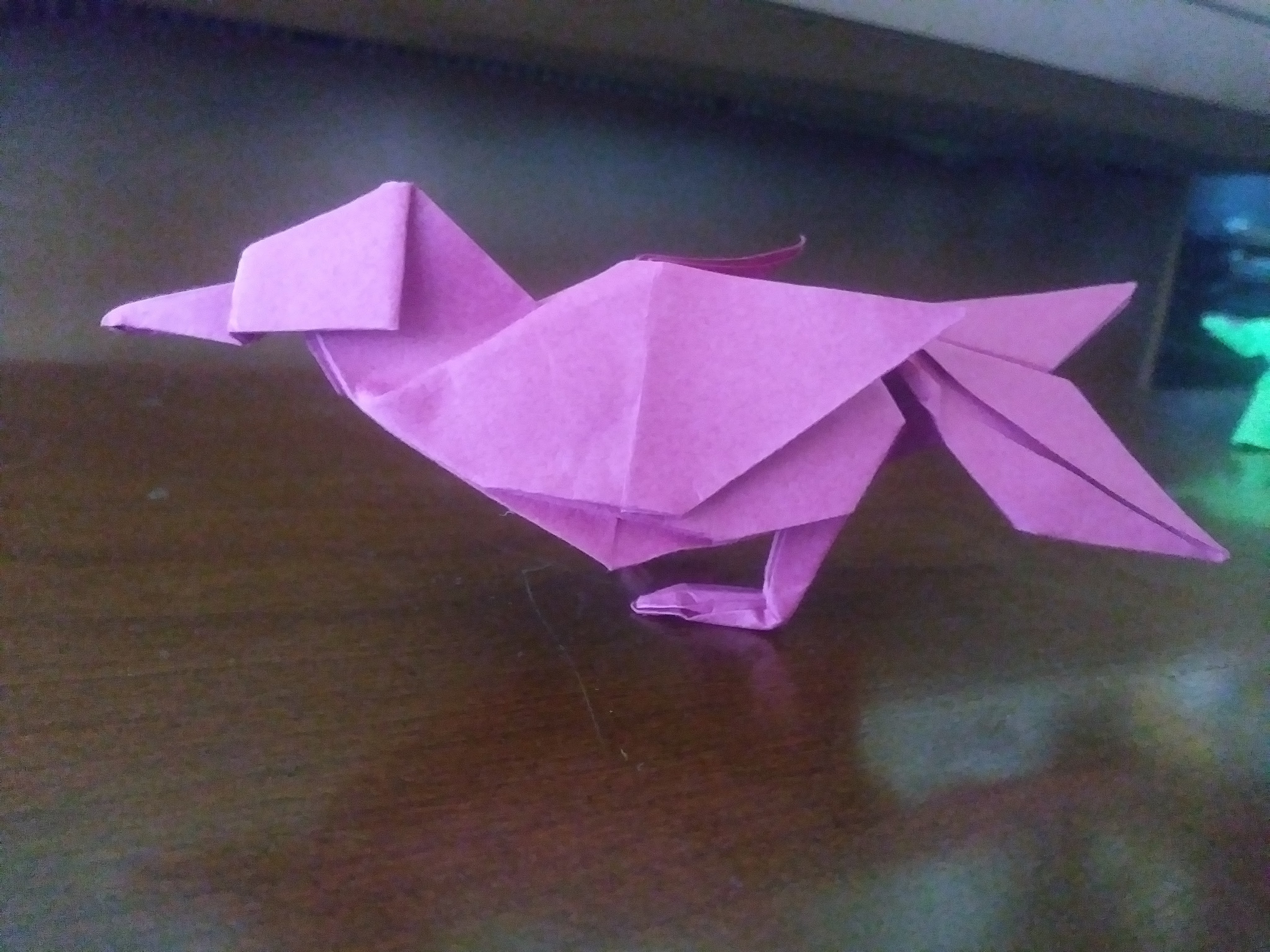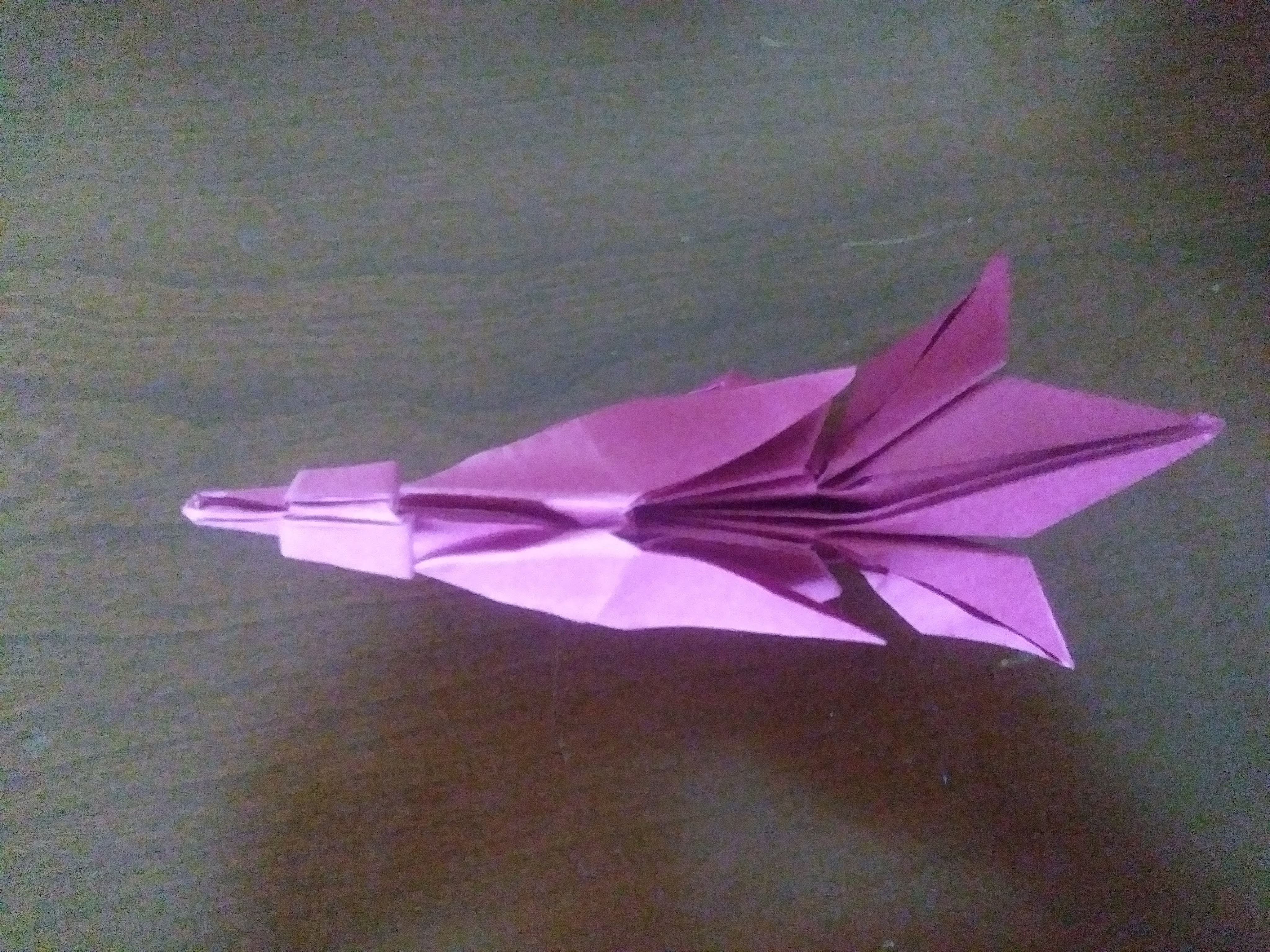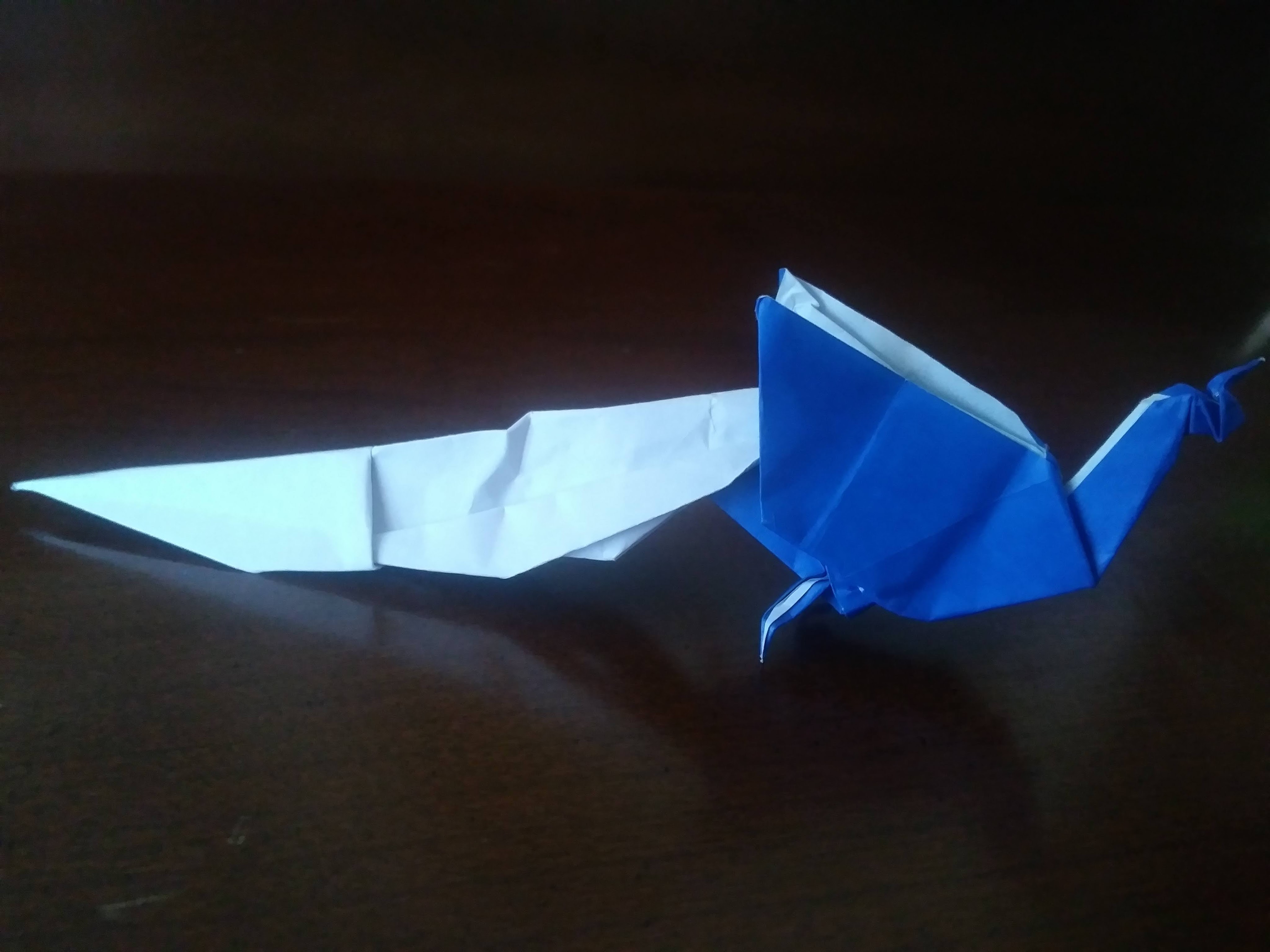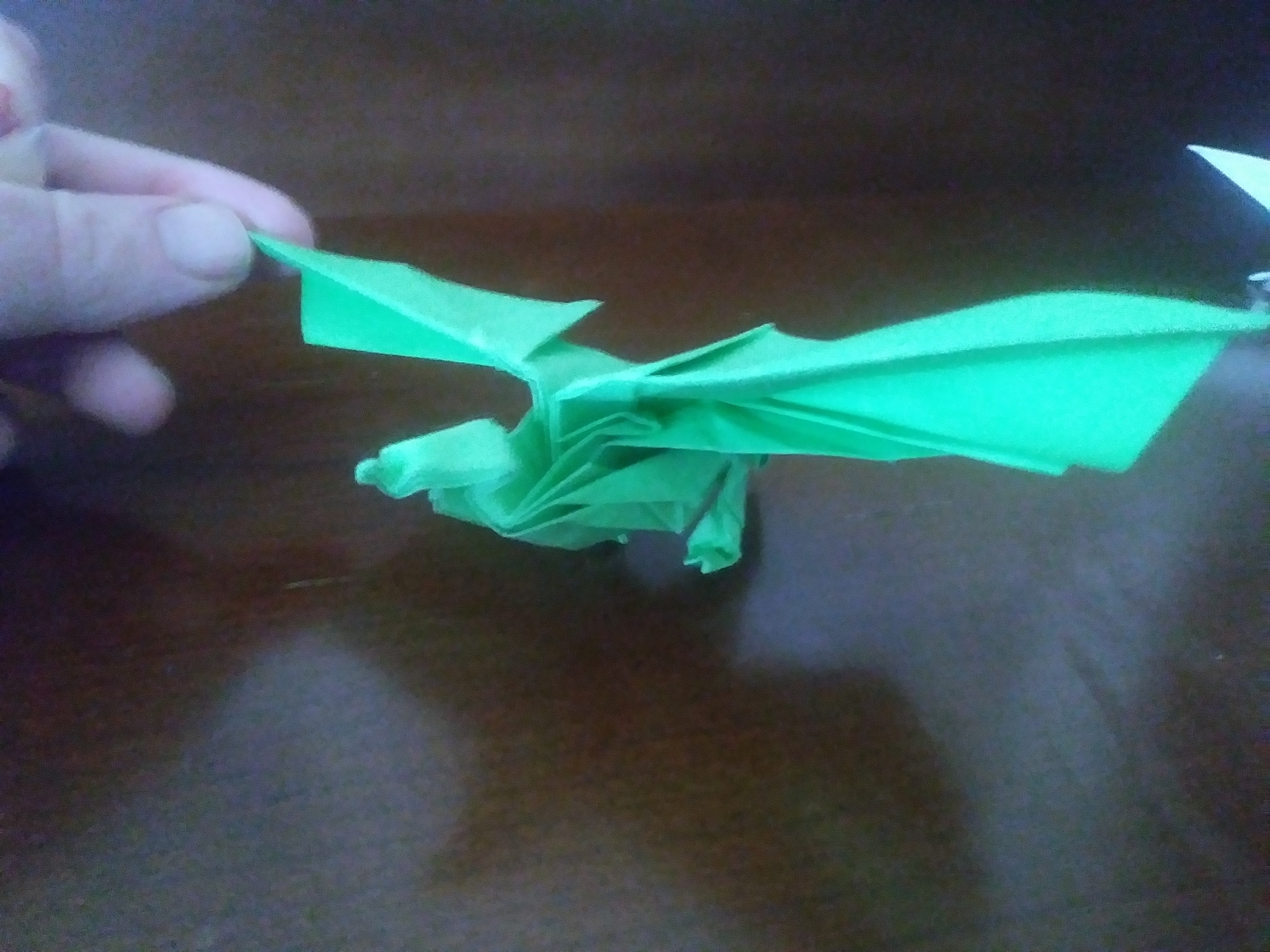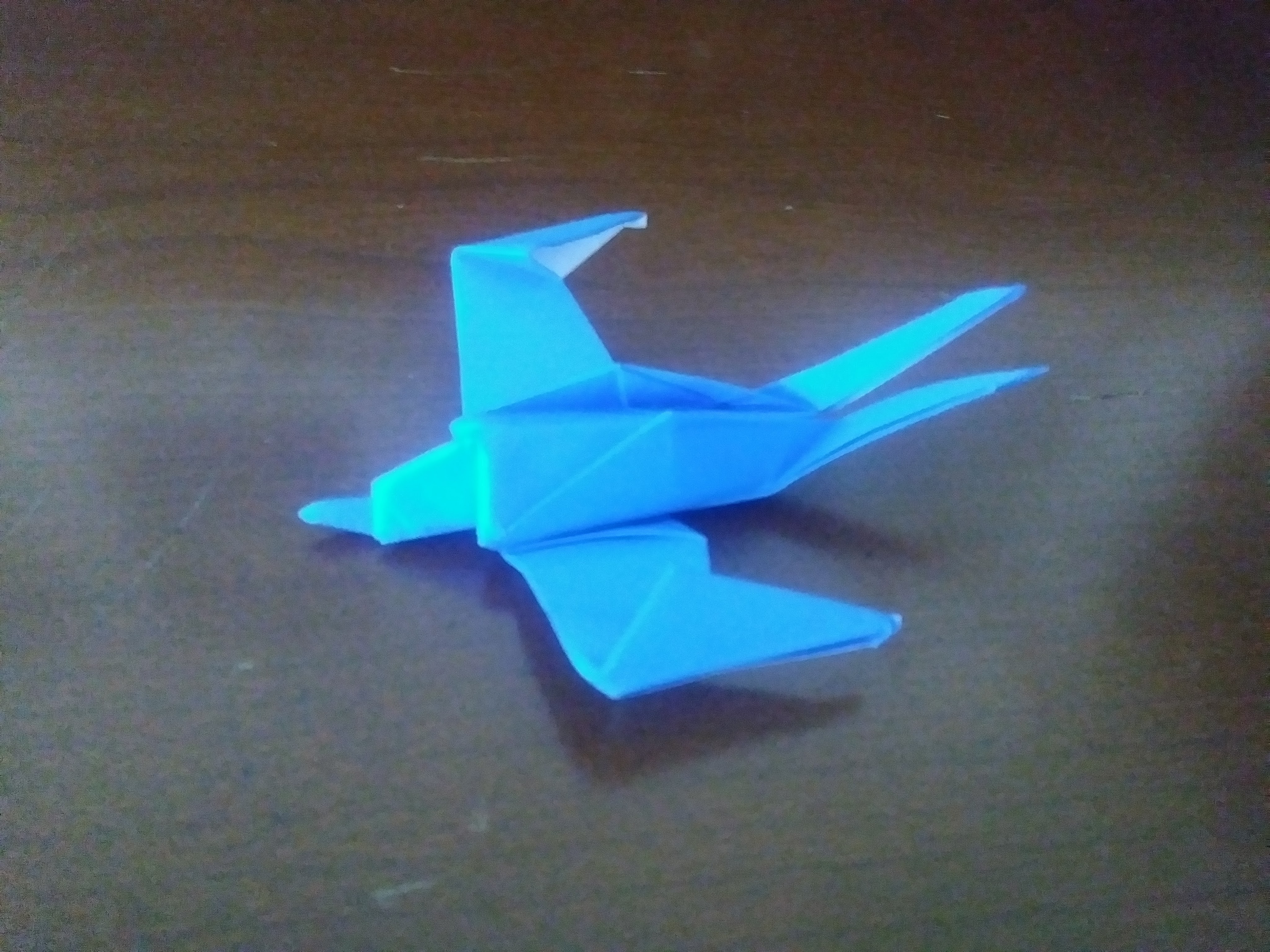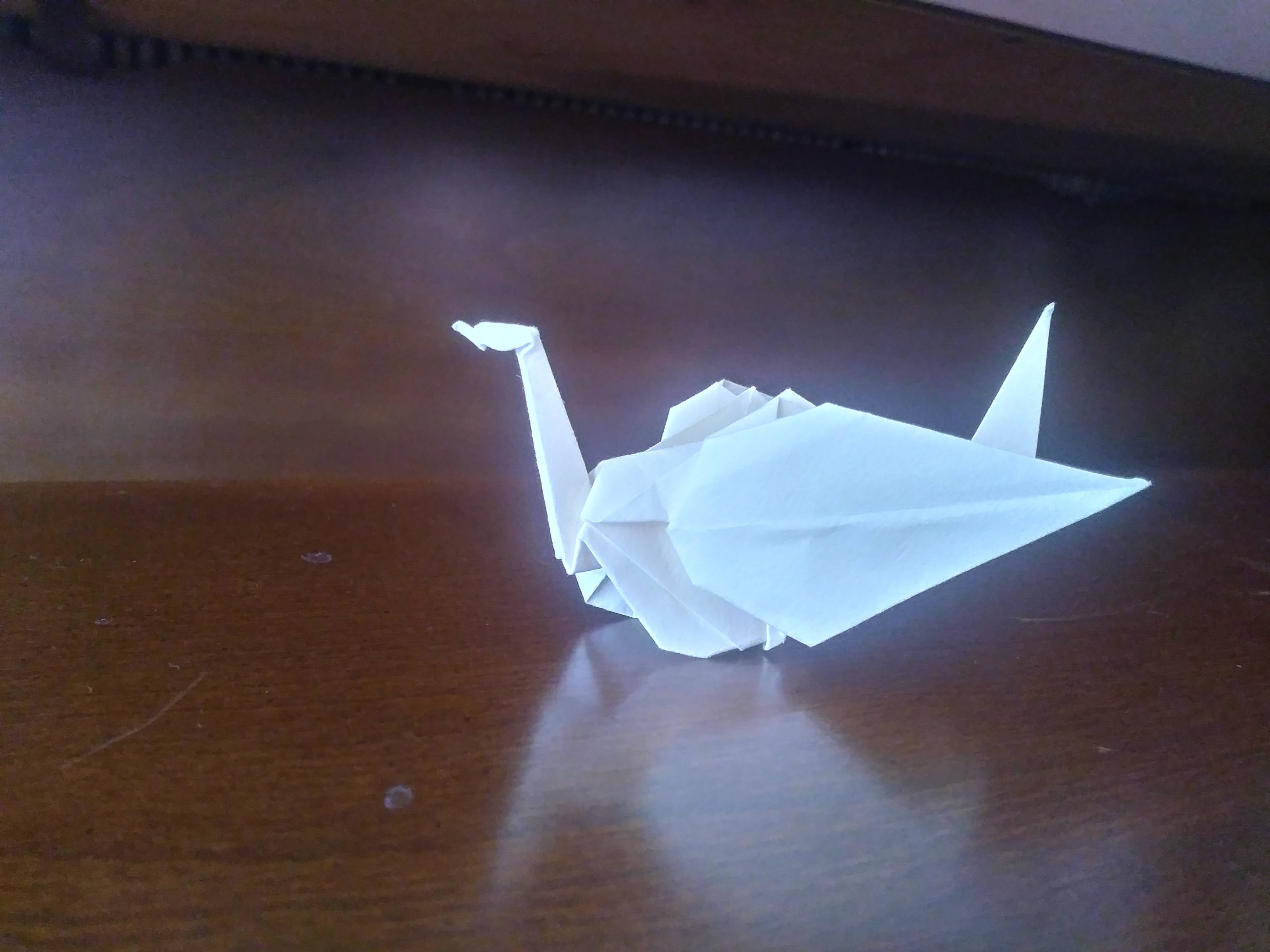The next dragon in the book is Classical Dragon by Kyohei Katsuta. Like the previous HJ Dragon, this one offers a decent balance of difficulty and effect. I should say, if I haven’t already that all the models in this book are advanced so this balance is somewhat relative. Regardless, I really like this model and it may very well end up being my overall favorite.
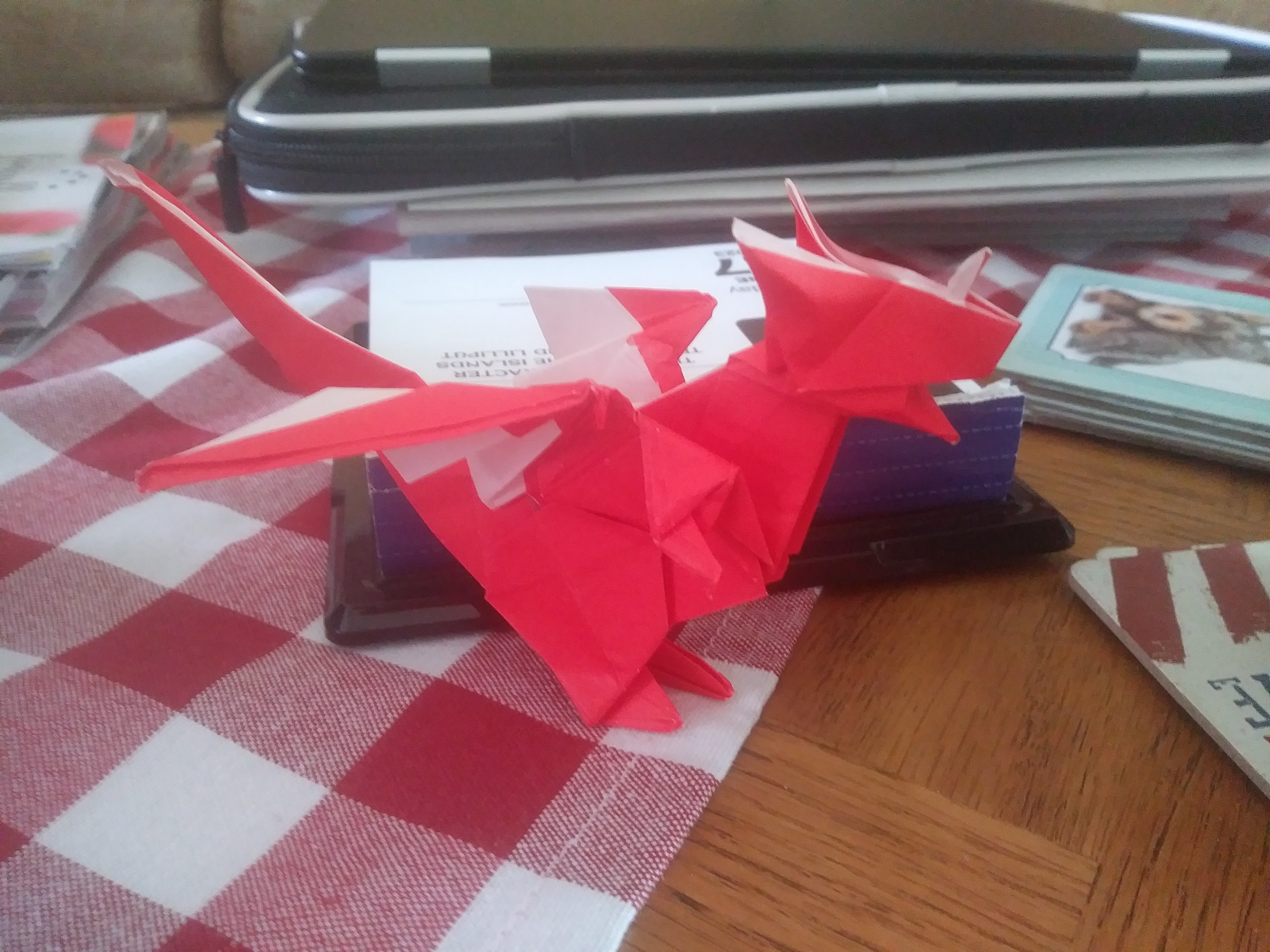
The model has many little details that make it great. The little nose horn and lower jaw give the face some personality. The wings are really nice and I include an overhead shot to show the detail below. One of the weaknesses of the HJ Dragon were its plain, flat wings and this model scores highly there. It can also free stand pretty reliably. I do think that it looks like a juvenile dragon hatchling, more than a full grown threatening monster, but I like that cute aspect here.
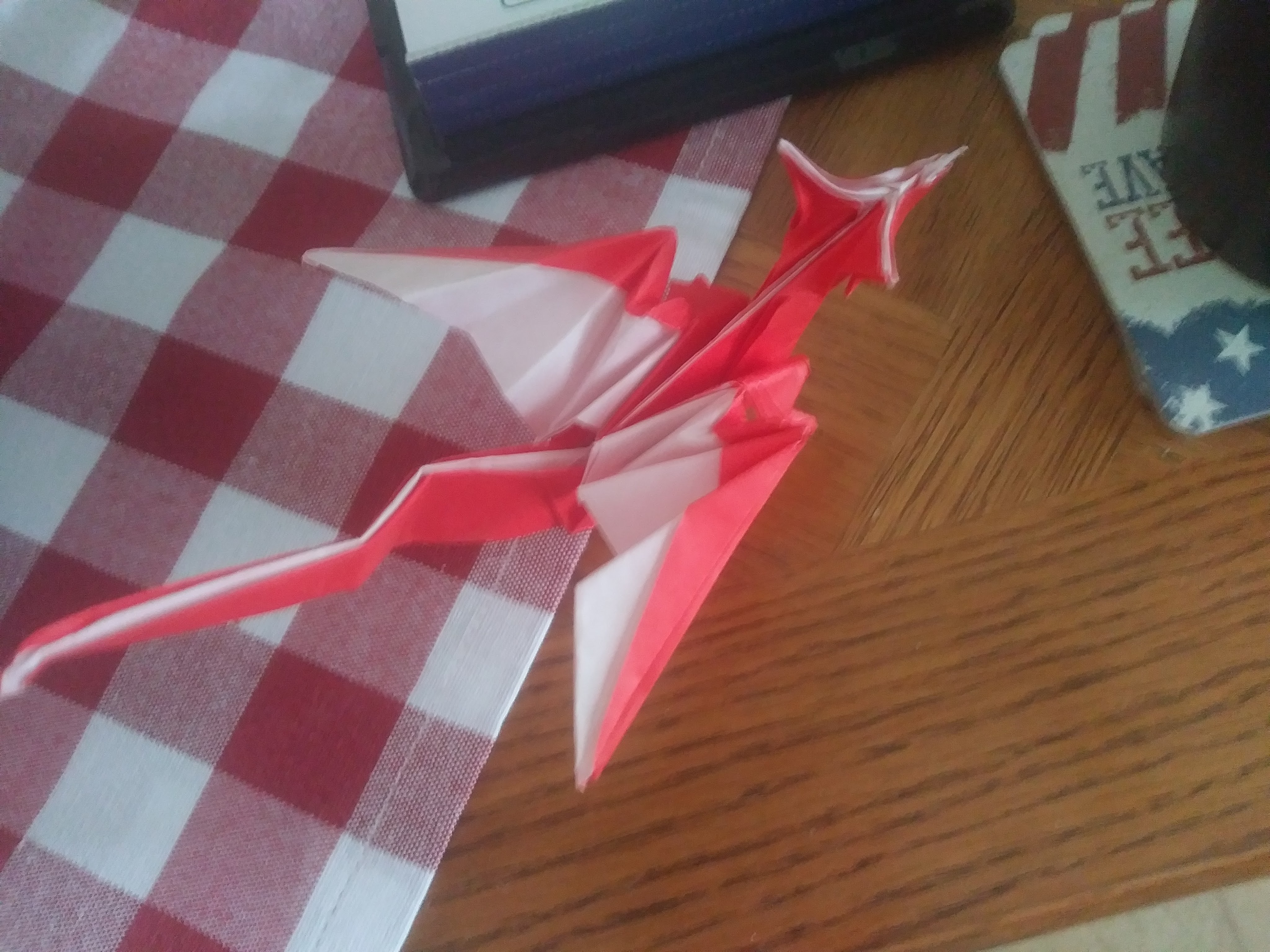
Overall, this is an excellent model that I would definitely make again!
